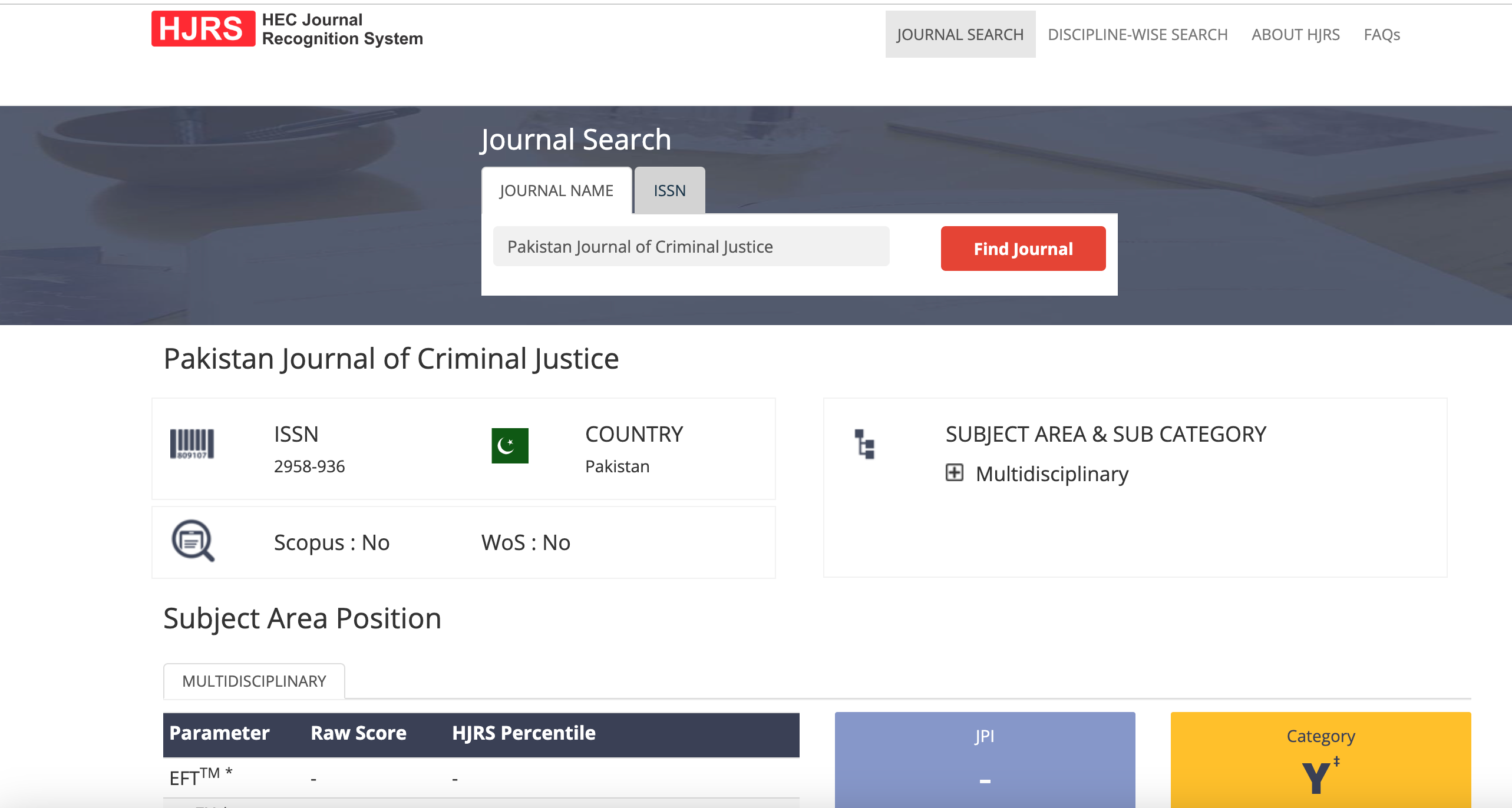Reexamining Domestic Violence: A Study on Male Victims in the Context of Pakistani Legislation
DOI:
https://doi.org/10.62585/pjcj.v4i1.48Keywords:
Spousal Violence, Domestic Violence, Male victim, DV Legislation, Analysis of DV lawsAbstract
This article endeavors to highlight and publicize the misunderstanding and misconception in Pakistani society that the men are always perpetrators of Spousal Violence (SV). It intends to establish that SV is not only wrong against women but also against men but it is not recognized in Pakistani society at its real degree. This study delves deeper into examining the causes and forms of SV by women perpetrator against men as well as the analysis of SV legislation in Pakistan. Analytical Legal research technique is used to collect data regarding SV against men and legislation on SV in Pakistan. Different enactments at National and provincial level and bills introduced for legislation on the topic of SV are looked into and compared with each other. SV against men is now being recognized to some extent but still a lot of work is needed to establish that the men may also be victim of SV and women may be perpetrator. As compared to women, SV against men is less perceived, especially in Pakistani society and some time it is not recognized. All legislative bodies of Pakistan, except one, do not recognize the SV against Men. There is rarity of legislation on SV against men in Pakistan, because there is only one enactment in Pakistan on the topic of Domestic Violence (DV), which defines the “man” as aggrieved person and recognize him as victim of DV or SV, and that is for Balochistan Province. Through provision of adequate resources and educating the masses male victims of SV may be supported and number of male victims of SV may also be reduced. For securing the rights of men, existing laws concerning DV requires amendments in accordance with the needs of time.
Downloads
Published
How to Cite
Issue
Section
License
Copyright (c) 2024 Mudassir Maqsood, Sana Younas

This work is licensed under a Creative Commons Attribution-NonCommercial 4.0 International License.





